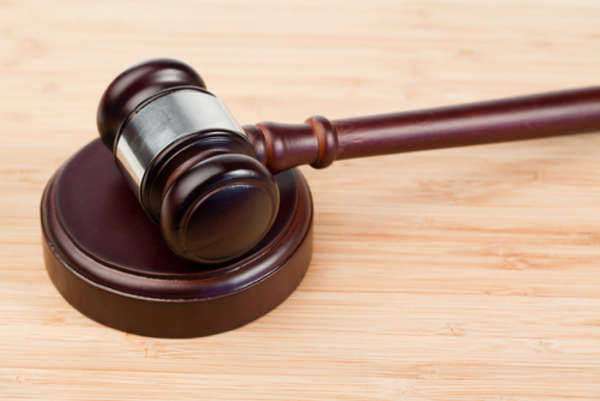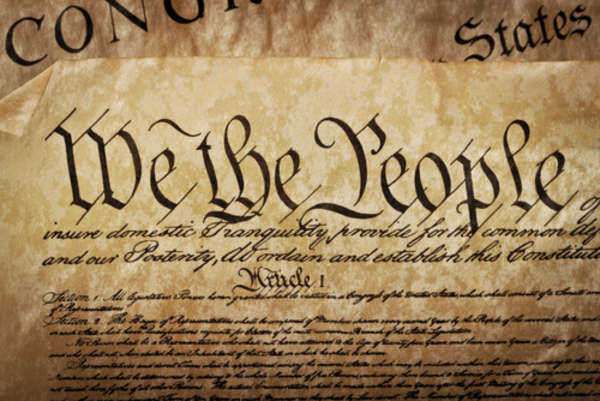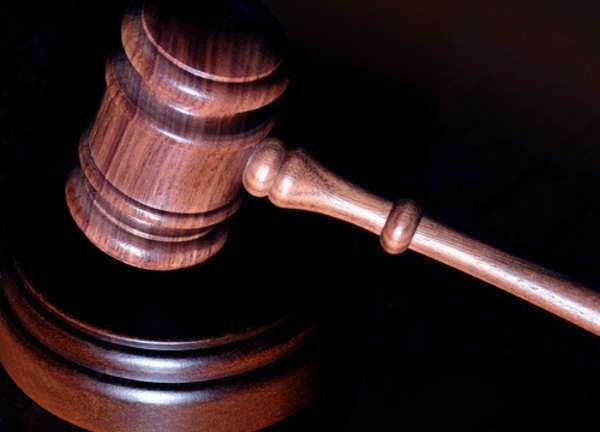
Preamble of Constitution: A Beacon of Hope and Purpose
Introduction
The preamble of a constitution is often described as the soul of a nation’s supreme law. It is a concise yet powerful statement that encapsulates the fundamental principles, values, and goals upon which a nation is founded. In this article, we will delve deep into the significance, history, and interpretation of the preamble of the United States Constitution, exploring how it continues to guide and inspire the nation even centuries after its inception.
- Historical Context
To understand the importance of the preamble, it is essential to delve into the historical context in which it was crafted. The preamble of the United States Constitution was adopted on September 17, 1787, during the Constitutional Convention in Philadelphia. This convention was convened to address the weaknesses of the Articles of Confederation, which had governed the young nation since the end of the American Revolutionary War.
The framers of the Constitution, including luminaries like James Madison, Alexander Hamilton, and Benjamin Franklin, recognized the need for a stronger federal government. However, they also understood the importance of limiting government power and safeguarding individual liberties. The preamble was a vital part of the solution they devised to strike this delicate balance.
- The Text of the Preamble
The preamble of the United States Constitution reads as follows:
We the People of the United States, in Order to form a more perfect Union, establish Justice, insure domestic Tranquility, provide for the common defence, promote the general Welfare, and secure the Blessings of Liberty to ourselves and our Posterity, do ordain and establish this Constitution for the United States of America.
Each word and phrase in the preamble was carefully chosen to convey specific principles and objectives. Let’s break down its key components:
- “We the People”: The opening phrase emphasizes that the authority of the Constitution derives from the consent of the governed. It establishes the democratic foundation upon which the entire document is built.
- “in Order to form a more perfect Union”: This clause reflects the framers’ desire to create a stronger and more unified federal government compared to the loose confederation that existed under the Articles of Confederation.
- “establish Justice”: Justice is a cornerstone of any just society. This clause highlights the commitment to ensuring fair and equitable treatment for all citizens.
- “insure domestic Tranquility”: This phrase underscores the importance of maintaining peace and order within the nation’s borders, preventing domestic unrest and conflicts.
- “provide for the common defence”: National defense is a critical function of any government, and this clause acknowledges the necessity of protecting the nation from external threats.
- “promote the general Welfare”: The framers recognized that government should play a role in promoting the well-being of all citizens. This clause embodies a commitment to the collective good.
- “secure the Blessings of Liberty to ourselves and our Posterity”: This final clause highlights the enduring commitment to preserving individual liberties for current and future generations.
III. Interpretations of the Preamble
Over the centuries, the preamble has been subject to various interpretations and debates. While it is not a source of specific legal rights or obligations, it serves as a guiding principle for the interpretation of the Constitution as a whole. Some notable interpretations include:
- National Government and Federalism: The preamble’s reference to forming a “more perfect Union” has been cited to justify the supremacy of federal law over state law in cases of conflict. It has played a crucial role in defining the relationship between the national government and the states.
- Individual Rights and Civil Liberties: The commitment to “secure the Blessings of Liberty” underscores the importance of protecting individual rights. This interpretation has been central in landmark Supreme Court cases dealing with civil liberties, such as those involving freedom of speech, religion, and privacy.
- Social Welfare: The phrase “promote the general Welfare” has been cited to support federal government involvement in areas such as healthcare, education, and social programs. It has been invoked in debates over the extent of government responsibility for the well-being of citizens.
- Democracy and Popular Sovereignty: The opening phrase, “We the People,” reinforces the idea of popular sovereignty—the notion that the people are the ultimate source of government authority. This concept has been central to discussions about the legitimacy of government actions.
- Justice and Equal Protection: The preamble’s call to “establish Justice” has been linked to the principle of equal protection under the law. It has been used to challenge discriminatory practices and policies.
- Historical Milestones and Social Change
The preamble has played a significant role in shaping the course of American history and social change. Throughout the nation’s history, it has served as a rallying cry for movements seeking justice, equality, and civil rights.
- The Abolitionist Movement: During the fight against slavery in the 19th century, abolitionists frequently cited the preamble’s commitment to justice and liberty as arguments against the institution of slavery. They argued that slavery was incompatible with the principles laid out in the Constitution’s preamble.
- The Civil Rights Movement: In the mid-20th century, leaders like Martin Luther King Jr. drew inspiration from the preamble’s promises of justice and liberty. The Civil Rights Movement sought to hold the nation accountable to these ideals by pushing for desegregation, voting rights, and an end to racial discrimination.
- Women’s Suffrage: The struggle for women’s suffrage also invoked the preamble’s principles. Advocates for women’s right to vote argued that denying women this fundamental right was a violation of the Constitution’s commitment to justice and equality.
- Modern Social and Environmental Movements: More recently, movements advocating for environmental protection, LGBTQ+ rights, and healthcare reform have used the preamble’s references to the general welfare and justice to make their cases for policy changes.
- The Preamble in Contemporary Society
In contemporary society, the preamble continues to serve as a touchstone for discussions about the role and responsibilities of government, the protection of individual rights, and the pursuit of a more just and equitable society. Its enduring relevance is evident in various areas:
- Legal Interpretation: Courts and legal scholars frequently refer to the preamble when interpreting the Constitution and its amendments. It provides context for understanding the overarching principles that inform specific constitutional provisions.
- Education: The preamble is often taught in schools as an introduction to the Constitution. It helps students understand the foundational values of the United States and the aspirations of its founders.
- Public Debates: Political debates often revolve around the values articulated in the preamble. Competing interpretations of “promoting the general Welfare,” for example, shape discussions about healthcare, education, and social welfare programs.
- Activism and Advocacy: Advocacy groups continue to use the preamble as a rhetorical tool to advance their causes. Whether it’s advocating for immigration reform, criminal justice reform, or economic equity, the preamble’s language of justice and general welfare resonates.
- Criticisms and Challenges
While the preamble has played a crucial role in shaping American society and law, it has not been without its critics and challenges:
- Originalism: Some legal scholars, notably proponents of originalism, argue that the preamble’s language is too vague and aspirational to serve as a reliable guide for interpreting specific constitutional provisions. They contend that it should not be given significant weight in legal analysis.
- Differing Interpretations: The broad language of the preamble can be interpreted in multiple
ways, leading to debates about the proper scope and limits of government authority. Disagreements persist over what constitutes the “general Welfare” or how to “establish Justice.”
- Changing Social Norms: As society evolves, so do interpretations of the preamble. What was considered just and in line with the general welfare in the 18th century may differ from contemporary views, leading to debates over constitutional evolution.
- Political Polarization: In an era of deep political polarization, the preamble’s principles are often weaponized by different political factions to support opposing policy positions. This can lead to further divisions and gridlock.
VII. Conclusion
The preamble of the United States Constitution stands as a timeless declaration of the nation’s values and aspirations. It serves as a testament to the enduring principles of justice, liberty, and the common good that have guided the nation through its most significant challenges and triumphs. While its interpretation may evolve with changing times, its core message remains clear: the Constitution exists to serve “We the People,” to promote justice, secure liberty, and ensure the general welfare of all citizens, both now and for generations to come. As the United States continues to navigate complex issues and debates, the preamble remains a beacon of hope and purpose, reminding the nation of the ideals that bind it together.
First things first, what is the Preamble? It’s the introduction to the Constitution, kind of like a summary of what’s to come. It’s only one paragraph long, but it’s packed with meaning. Let’s take a closer look!
The Preamble
“We the People of the United States, in Order to form a more perfect Union, establish Justice, insure domestic Tranquility, provide for the common defence, promote the general Welfare, and secure the Blessings of Liberty to ourselves and our Posterity, do ordain and establish this Constitution for the United States of America.”
What does it mean?
“We the People of the United States”
This is how the Preamble starts, and it’s important because it shows that the power of the government comes from the people. The Constitution is a document created for the people, by the people, and it sets up a government that is accountable to the people.
“In Order to form a more perfect Union”
This is the goal of the Constitution: to create a government that can bring the states together in cooperation and ultimately create a more perfect union. This phrase reminds us that the United States wasn’t always united; it was originally thirteen separate colonies. When the states came together to create the Constitution, they wanted to make sure that everyone was working together and that no state had more power than another.
“Establish Justice”
The next goal of the Constitution is to establish justice. This means that everyone in the United States should be treated fairly and equally under the law. It’s why we have things like courts and judges, to make sure that the rules are being followed and that everyone is being treated the same way.
“Insure domestic Tranquility”
This phrase refers to the idea of peace and stability within our country. The government is responsible for helping to keep people safe and protected, both from outside threats and from threats within our own borders. This includes everything from protecting people from crime and violence to responding to natural disasters.
“Provide for the common defence”
This refers to the idea of protecting the United States from outside threats. One of the reasons the Constitution was created was to make sure there was a strong federal government that could unite the states and protect the country as a whole. This includes having a strong military to defend the country from enemies.
“Promote the general Welfare”
This phrase refers to the idea that the government should help make life better for everyone in the United States. This includes things like creating public schools so that everyone has the opportunity to get an education, building roads and infrastructure so that people can travel and trade goods more easily, and providing things like healthcare and social services to people who need them.
“Secure the Blessings of Liberty to ourselves and our Posterity”
This phrase ties everything together. It’s a reminder that the Constitution is about protecting the freedoms and rights of the people who live in the United States. This includes everything from freedom of speech and religion to the right to vote and participate in government. The idea is not just to protect these rights for ourselves, but for future generations as well.
“Do ordain and establish this Constitution for the United States of America.”
Finally, this phrase shows us that the Constitution is the foundation of our government and laws. It was created and ratified by the states to be the highest law of the land. It sets up a system of government that is designed to protect the rights and liberties of all people in the United States.
Conclusion
In conclusion, the Preamble of the United States Constitution lays out the goals and ideals of the document. It reminds us that the Constitution was written for the people, by the people, and that the power of the government comes from the people. The Preamble sets up a government that is accountable to the people, and that is designed to protect the rights and freedoms of all people in the United States. It’s a reminder that while the Constitution was written over 200 years ago, its principles and ideals continue to guide our country today.
What is the Preamble?
The Preamble is the opening statement to the United States Constitution. The preamble explains the reasons why the Framers of the Constitution made our government a republic. By doing this, the founding fathers replaced the Articles of Confederation. The Preamble along with the rest of the Constitution was written over a period of about 6 weeks. The Preamble helped explain why the Constitution was written. However, it is not the law.
Text of the Preamble
The preamble of the United States Constitution is the following:
“We the People of the United States, in order to form a more perfect Union, establish Justice, insure domestic Tranquility, provide for the common defense, promote the general Welfare, and secure the Blessings of Liberty to ourselves and our Posterity, do ordain and establish this Constitution for the United States of America.”
Understanding the Preamble
The Preamble can be broken down into many important phrases. All of these phrases are very important for understanding the purpose of the United States Constitution.
We the people: This phrase means all the citizens of the United States of America. Even though the Constitution was written up by some of the most well-educated men of the new country, the rights given under the document were given to all American citizens.
In order to form a more perfect union: The previous government was based on the Articles of Confederation, which were very limited. When the Framers wrote this, they felt that they were making a new government that would be a better way to govern the country.
Establish justice: The reasons why there was Revolution against England were still important to the American citizens, so they wanted to make sure that they would have justice under the Constitution.
Insure domestic tranquility: One of the main reasons why the Constitutional Convention was held was because of Shays’ Rebellion. This was an uprising of farmers in Massachusetts against the state for having to repay war debts. Citizens were worried about the keeping of peace within the country’s borders.
Provide for the common defense: There was still a chance of being attacked by other countries. No individual state had the power to defend itself against attacks. Because of this, the Framers knew that it was important for the states to defend the nation together.
Promote the general welfare: This phrase meant that the well-being of the citizens would be taken care of as well as possible by the Federal government.
Secure the blessings of liberty to ourselves and our posterity: The point of this phrase in the Preamble, and the constitution as a whole was to help protect the country’s hard-earned rights for liberty, unjust laws, and freedom from a tyrannical government.
Ordain and establish this Constitution for the United States of America: This last phrase of the Preamble is a powerful statement saying that the people made this document, and the people give the country its power.













